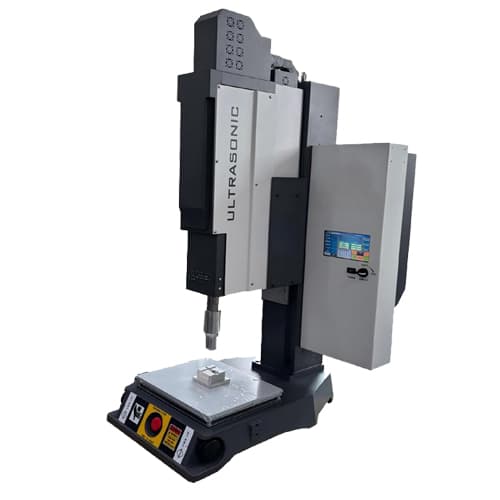Why Ultrasonic Welding = True Waterproof Performance?
Waterproof performance is no longer a “premium” feature—it’s becoming a baseline expectation across medical devices, consumer electronics, automotive sensors, and outdoor IT hardware. As products shrink and reliability requirements tighten, manufacturers are shifting away from adhesives and gaskets toward a more robust solution: ultrasonic welding.
But let’s be blunt: ultrasonic welding does not make a product waterproof automatically. Waterproofing happens only when engineering, materials, and process control align with precision.

Ultrasonic welding melts plastic at the interface using high-frequency vibration. When the material resolidifies, it forms a single continuous molecular structure, eliminating micro-gaps where water could penetrate. Adhesives simply can’t match this consistency.
Cycle times are measured in fractions of a second, and the process is inherently compatible with fully automated production lines. No curing time, no solvents, no contamination risk.
The combination of weld amplitude, pressure, energy, and collapse control makes ultrasonic welding one of the most measurable and predictable sealing processes—ideal for IP67–IP68 requirements.
People love to talk about “ultrasonic waterproof welding,” but the truth is simple: waterproofing is a design decision first, and a process second. Here are the factors that truly decide success or failure.
A waterproof weld requires a continuous, closed-loop joint. The best-performing design is the shear joint, which offers:
l Deep mechanical engagement
l Strongest structural weld
l Reliable sealing even under pressure changes
l Excellent material flow and gap filling
Other viable options: energy-director rings, tongue-and-groove with flash traps.
Non-viable: open joints, inconsistent wall thickness, decorative seams pretending to be welds.
Not all plastics cooperate equally during ultrasonic fusion. The top performers for waterproof welds:ABS,PC,PP,PE,PA6 / PA66,PC/ABS alloy.
Materials that often struggle:
Glass-filled (>30%)
Highly crystalline plastics without modified grades
Elastomeric plastics with too much damping
If your molded part isn’t flat, stable, and dimensionally consistent, your sealing line will fail—period.
Critical factors:
l Warpage <0.1 mm in the weld area
l Uniform wall thickness
l No sink marks in the weld path
l Gating positioned to avoid internal stresses
Waterproof welding demands strict control of:
Collapse distance (most important for sealing consistency)
Energy mode with technological safeguards
Trigger force for consistent engagement
Post-weld hold time to stabilize the bond
Modern welders equipped with digital servo actuators, real-time signature analysis, and closed-loop amplitude control give you the reliability needed for mission-critical sealing.
Fluid path manifolds
Catheter housings
IV system components
Reliability under sterilization and repeated use drives OEMs toward ultrasonic sealing.
l TPMS sensors
l ADAS camera housings
l Smart exterior lighting modules
These parts must survive humidity, pressure, and temperature swings.
l Earbuds
l Smart watches
l Wearable health trackers
Ultrasonic welding supports miniaturization without compromising durability.
l Smart locks
l Weather sensors
l Wireless controllers
High IP rating demands + high production volume = ideal ultrasonic environment.
Let’s be direct—this process isn’t perfect for every situation.
Choose alternatives like laser welding or hot-plate welding if:
The material has poor ultrasonic weldability
The enclosure is large with long weld paths
Clear-to-clear or aesthetic welds are required
The design can’t support a closed-loop joint
The smartest manufacturers evaluate sealing performance early in the design process, not as an afterthought.
Waterproof ultrasonic welding is not about luck. It’s about engineering discipline:
Right material + Right joint + Right equipment + Right process control = Reliable IP-rated sealing.
Companies that master these fundamentals can produce compact, durable, and cost-effective sealed products that outperform adhesive-based or gasket-based designs.
Phone: +86-15989541416
E-mail: michael@sztimeast.com
Whatsapp:+86-15989541416
Add: 3/F, Building 5,Huixin Intelligent Industrial Park, Xinhu, Guangming, Shenzhen,China 518107